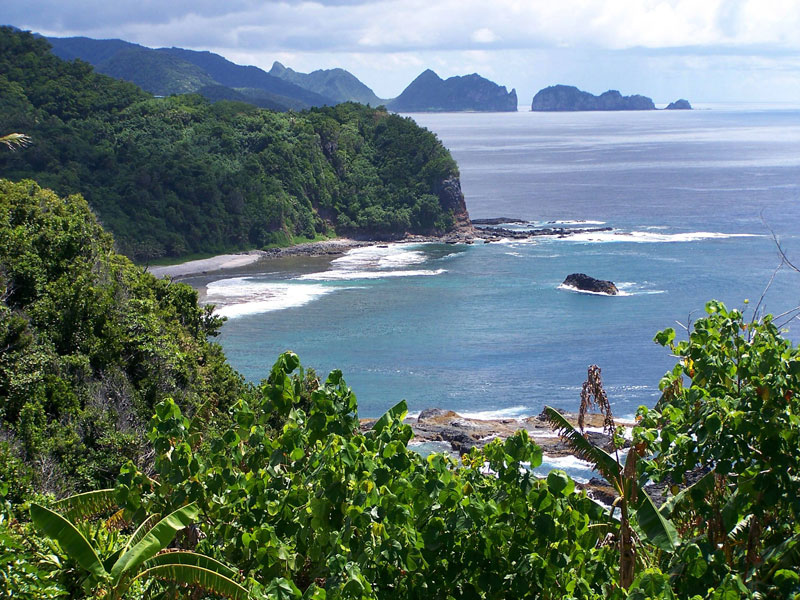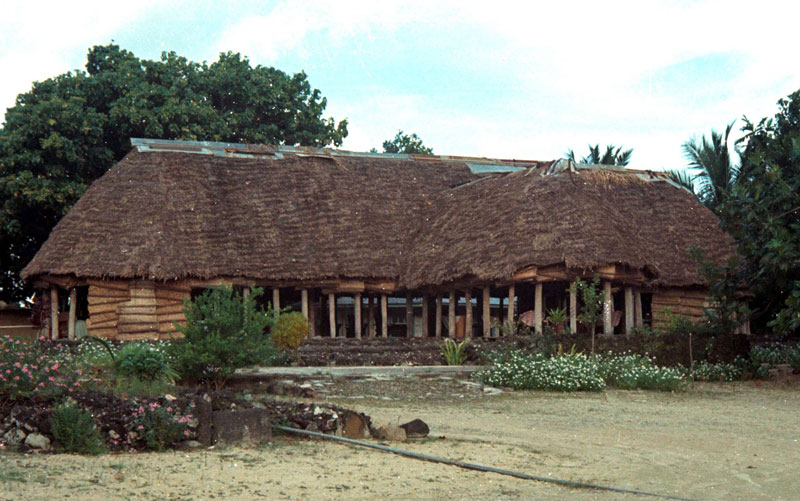American Samoa is a territory of the United States. When we first traveled to Tonga (where my husband is from), we had to go through American Samoa. The flight we traveled on was overbooked so we got “bumped off.” The airline put us up in a hotel until they could get us on a flight. They also reimbursed us for our ticket due to our inconvenience. Little did we know that we would return to live there for a couple of years.
My husband and I had some good friends that lived in American Samoa. They were three Samoan brothers married to three ladies from the mainland USA. We enjoyed our two-day stay in American Samoa visiting with our friends.
 A few years later, my husband was offered a job in American Samoa working for the Department of Education. Since he was tired of the snowy winters in the mainland, he was more than happy to take the job. At the time we had three children, and were soon expecting our fourth.
A few years later, my husband was offered a job in American Samoa working for the Department of Education. Since he was tired of the snowy winters in the mainland, he was more than happy to take the job. At the time we had three children, and were soon expecting our fourth.
The island of Tutuila, where we lived, is the largest and main island of American Samoa where most of the population live. Pago Pago is the capital and it has a beautiful harbor. The main road on the island winds around the coast. The island is quite small (21 miles long) and narrow (3 miles across). The north coast has steep cliffs while the southern part is relatively flat. There are some pretty beaches along the coastline.
American Samoa is usually very humid and hot. It rains often, sometimes in buckets. I had a bit of adjusting to do because of the climate. The home we lived in had a high ceiling and louvers so the air could circulate. It had screens from floor to ceiling, and what were called “sails”, that could be lowered or raised, depending on the weather. They were similar to blinds.
We lived at Tafuna, which was quite close to the airport. We stayed in government housing on Lua Street. My husband taught school at Leoni High School, which was at the end of the island. We had shipped over our green mustang from the mainland, and our racy car made quite a hit with the islanders.
We enjoyed learning more about our new home. Our older two children started to school, and wore uniforms. I enjoyed staying home with our youngest child. We attended church in Nuuuli. To get to the village where our chapel was, we traveled on a narrow road which passed through the heart of the village.
Many of the homes in Samoa were open – meaning they had no walls, only large poles holding up the roof. You could see into the homes, with all the beds, furniture, appliances and people. For privacy, the families rolled down woven coconut fronds. This was all new to me. The thing I thought was very interesting was that most homes had large televisions, and you could see the people watching and eating, and sleeping, etc.
 In Samoa, they have what is called the “Sa”. This is a period of prayer each evening that is enforced by the village chiefs (matai). An assigned person rings a bell, blows a conch shell or beats on a drum to announce the time of the sa. It is rude to eat or drink during this time (which could last up to 30 minutes) and everyone is expected to stop and pray. Youth in the villages have a curfew and the village chiefs have a lot of power including disciplining those who break the rules.
In Samoa, they have what is called the “Sa”. This is a period of prayer each evening that is enforced by the village chiefs (matai). An assigned person rings a bell, blows a conch shell or beats on a drum to announce the time of the sa. It is rude to eat or drink during this time (which could last up to 30 minutes) and everyone is expected to stop and pray. Youth in the villages have a curfew and the village chiefs have a lot of power including disciplining those who break the rules.
The status of a village chief is traditional. The villagers respect him because he is in charge of the communal resources. He is also responsible for making sure every one in the village has what they need to live.
We found out that we needed to be careful when we wanted to go to the beach. If we had to pass through someone’s yard to get to the beach, we first ask them if it is okay. Also, if we wanted to take photos of an individual, we asked for their permission.
When entering a home, we took off our shoes or slippers. Often, the people did not have furniture, so we would sit on their mat. It was considered rude to point our feet towards them.
We had a very interesting and enjoyable time living in American Samoa.
Bio
Ruth Elayne Kongaika was raised in the mainland, USA, but has been traveling in the South Pacific for the past forty years. She tries to capture the beauty of the islands through her photography, painting and writing. She has a blog which shares some of her art and favorite subjects at:
email: kongaikr@byuh.edu







